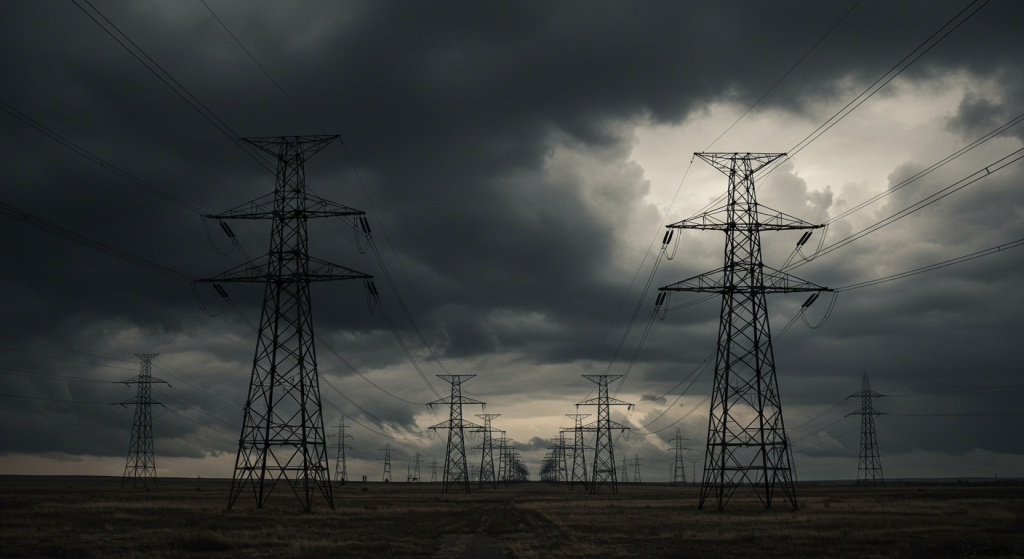Electrical Transmission Lines and Towers: An In-Depth Guide
2025-04-28
Uses and Applications of High-Voltage Electrical Power Transmission Towers
- The most basic elements in the framework of electricity transmission infrastructure are electrical transmission lines and towers, which are used to transmit high-voltage power from substations to urban, rural, commercial, and even remote regions.
- 10kV and 11kV transmission line towers stand out as some of the most versatile due to their efficiency in navigating a variety of weather and terrain geography.
- These structures, which are built above the ground, not only serve the mechanical purpose of physically supporting the conduits but are also very important for system energy stabilization and conservation.
The Best Selling 10kV/11kV Powerline Towers
Powerline mounts, along with the other supporting parts of the line, are mechanically and electrically manufactured to the highest standard. The following are the basic characteristics of the 10kV and 11kV voltage systems:
1. Building Material
The towers are usually made from Q235 or Q345 steel. These steels have good strength as well as anti-corrosion properties. In addition, the Steel parts have waterproofing done before marking. These pieces, along with other components protected by Hot Dip Galvanization, withstand corrosion and perform well in humid, tropical, coastal, aggressive, or any region. Also, these pieces are subjected to severe conditions.
2. Tower Engineering and Design
The design is determined by mechanical loading and wind, topographical parameters, as well as the circuit configuration: single or double circuit. The design also depends on the voltage level specification- Diagram 10kV or 11kV towers. Modular design components of the tower. These components streamline the assembly procedures, thereby decreasing construction time and labor expenditure.
Various Possible Uses for Transmission Towers
1. Electricity for Villages and Towns
The cities and villages under the action of transmission towers receive electricity on their 10kV and 11kV lines. The Radiating Power, i.e., transmission towers, is rationally designed for the capital investment in the town’s Electricity grid.
2. Electricity for Industries and Large-Scale Manufacturing
These regions are supplied with power using high-voltage electric power lines that aid in the operations of heavy machinery and continuous systems.
3. Locating in Uninviting Terrain
These described towers are located in remote, inaccessible, high-altitude hard to hard-to-reach areas. They provide robust support to the overhead lines of electricity in crossing rivers, steep hills, as well as the sandy deserts.

Customization and Technology Benefits
1. Power Resistance
Another strong feature of the XY-35 model angular transmission tower is the guarantee of operational reliability under adverse weather conditions for over 30 years when created and performed in the defined scope of work.
2. Supporting Voltages
supportable for voltages of 10kV, 11kV, and even 33kV-35kV meeting the requirements of the power network.
3. Elevation Change
Considering the prerequisite ground and height adjustment requirements for a multitude of installation purposes, the towers can be extended from a height of 3 meters up to 120 meters.
4. Protective Treatment
The coastal areas, which are regarded as vulnerable areas, are made less prone to corrosion owing to the treatment of all the steel surfaces done through hot-dip galvanizing.
Compliance and International Standards of Quality
We abide by IEC, GB, and ISO standards for electric transmission equipment and towers per ISO 9001:2015. To guarantee the greatest possible quality, each of the units is subjected to additional quality control checks before being dispatched from the factory, which includes confirming:
- Stability
- Load bearing
- Wind resistance
- Safety clearance
These tests allow us to determine if the device is dependable under a multitude of electrical and environmental factors.
Performance and Safety Measures Consideration
- Surge Protection
Safety and operational reliability during the execution of the tower’s functions are provided through the use of surge and lightning protective devices and ground wires placed on the tower.
- Minimal Maintenance
The maintenance requirements and expenditures associated with the tower throughout its lifetime, combined with advanced design and superior materials, render the structure low-maintenance.
Trust XY Tower for Your Power Infrastructure Needs
We have specialized in the development of products such as electrical transmission lines and towers, line spacer requirements, and custom rural and industrial line grids. Structural compliance is certified for ruggedness accuracy globally, and industry standards are offered with ease with all our products.
Design and Engineering Considerations
From civil and architectural perspectives, a comprehensive compilation of design bases and parameters covers all types of transmission towers:
- Environmental Implication
The circumferential prowess of the design bulk in strength is determined by surrounding external factors such as wind, ice load, and seismic forces.
- Material Selection
A few of the most common materials are wood, concrete, aluminum, and steel. Based on finance, state conditions, and required durability, some sovereign merit evaluation tends to prioritize one of the construction materials, whilst scope shapes the composite’s advantageous parameters. Wikipedia.
- Structural Angles
Integrity pertains to the ability to endure forces and the weight of wires classified as conductors, ice accumulations from certain regions, wind loads n and pressure and load experienced by building parts above the center of mass in heavy structures.
Regulation of Maintenance and Operating Procedures
Tower and line maintenance and operation for service continuity are critical.
- Inspection: Scheduled assessments are useful in diagnosing issues such as corrosion, external deterioration, and structural collapse.
- Vegetation Control: Control of vegetation growth in the overhead and side view of the tree line is required because of the possible outages. Effective vegetation control promotes public and line safety while reducing outage duration.
- Automatic Control Monitoring: Real monitoring and real-time controlling of corrective action to mitigate anomalies are done with the help of sensors, monitoring systems, and other automated detection systems.
Conclusion
The most developed parts of the electric power system are the electrical transmission lines and towers. These components are crucial in the control and management of the electric power system, and their construction and operational state are critical for attaining optimal power system performance. Further details can be located on the XY Tower website, which presents their area of specialization and services offered in greater detail.

Hey, I’m Chunjian Shu
"X.Y. Tower: Reliable, innovative solutions for high-quality towers and electrical equipment with professional service.
